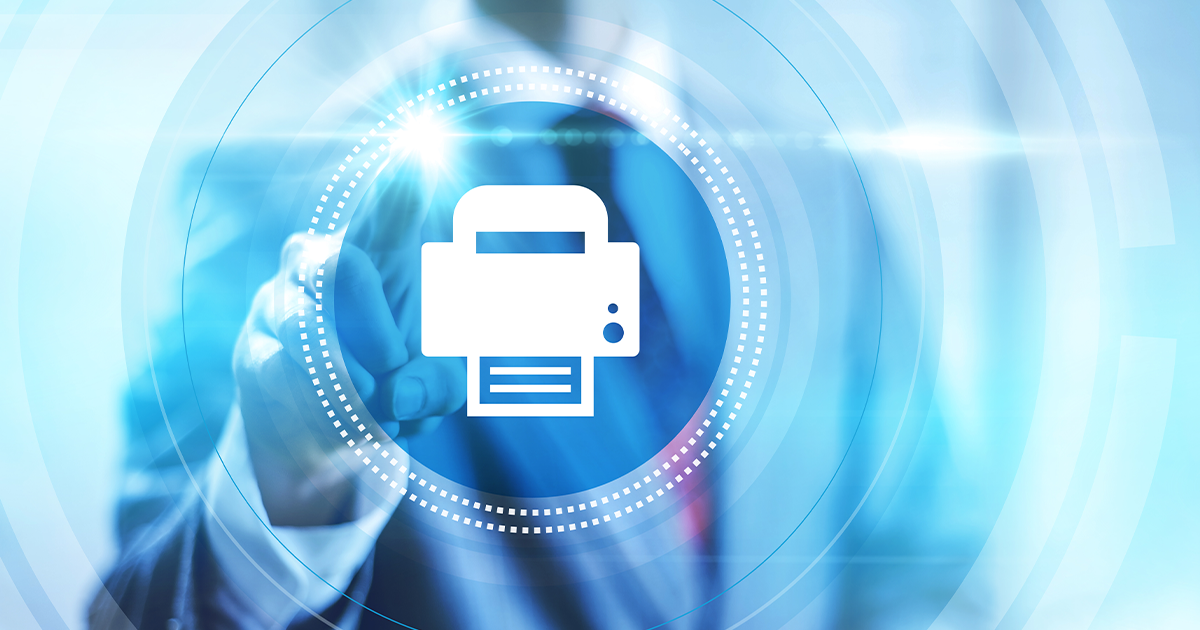For the past 25 years, most office printers have typically included built-in memory. This memory helps to store and process print jobs as well as making these devices print more efficiently. By understanding the various types of memory within your printer, you can better appreciate how these devices store and manage information, which is crucial for maintaining data security.
In this article, you’ll learn how to implement effective security measures that protect your sensitive information from unauthorized access, ensuring that your data remains confidential and secure throughout the printing process.
Here’s what we’ll cover:
- What Is Printer Memory?
- Why Printers Need Memory and How It Works
- Best Practices to Secure Your Printer
- How to Erase Printer Memory Safely
- Cost Benefits of Implementing Printer Security Measures
What is Printer Memory?
Printers, much like computers, come equipped with memory. This memory can be divided into two types: volatile memory (similar to RAM in computers) which is lost when the printer is turned off, and non-volatile memory (like a computer's hard drive) which retains data until it is deleted. This means your printer has the capability to store data, posing both convenience and potential security risks.
For a detailed explanation of printer memory types and their implications, check out our informative article on how to protect print data.
It’s important to understand that modern printers can store copies of documents, print logs, fax logs and even scans. This makes it essential to handle printers with the same level of security as other data-storing devices.
Why Printers Need Memory and How It Works
Printers need memory to function efficiently. Memory allows printers to receive files from a computer as fast as the connection allows, ensuring that the printing process is not slowed down even if the computer’s performance dips. This is particularly important in busy office environments where multiple print jobs are processed simultaneously.
Printers use their memory to store print jobs in a circular buffer. This means data is written in sequence until the end of the storage space is reached, at which point it starts overwriting the oldest data. This efficient use of memory ensures that printers can handle large volumes of data without performance issues.
Best Practices to Secure Your Printer
We’ve found a few best practices that have worked well for our clients. These methods provide better print security for any document, especially those containing sensitive data.
- Before printing, ensure that your print fleet is secure by applying user access permissions and using print management software like uniFLOW or PaperCut. These systems encrypt data and provide detailed reporting to enhance compliance and audit trails. For a comprehensive guide on implementing these security measures, read our Expert's Guide to End-to-End Print Security.
- During printing, maintain control and visibility of all network users to meet Zero Trust policy standards. Implement secure print release queues that require user authentication to release print jobs. This prevents unauthorized access to printed documents.
- After printing, ensure that printed output is secure by following proper print protocols, including placing printers in secure locations, using locking paper trays and adopting secure disposal methods for unclaimed print jobs. In addition, we recommend to regularly update printer firmware to further protect against vulnerabilities.
Following these best practices will not only increase printer security, it will also help to make your employees aware of the methods that you are implementing to keep their print jobs and your organization more secure.
How to Erase Printer Memory Safely
Erasing printer memory safely is essential to prevent unauthorized access to sensitive information. For home printers, a basic reset involves turning the printer off, unplugging it, plugging it back in again and then turning the printer back on to reboot the device. This should clear the volatile memory. To learn more about the process of securely erasing printer memory, including for business printers, check out our guide on how to erase your printer's hard drive.
For non-volatile memory, especially in business printers, more steps are needed. Advanced office multifunction printers often have hard drives with gigabytes of storage, requiring a more thorough approach. Check with the manufacturer for methods to wipe saved data or use built-in security features to overwrite and destroy data.
Cost Benefits of Implementing Printer Security Measures
Implementing printer security measures can lead to tangible cost benefits. One clear advantage is the reduction of unclaimed print jobs, which can save companies thousands of dollars in wasted paper and toner. Secure printing solutions also help organizations comply with data protection regulations, avoiding potential fines and reputational damage.
For instance, Marquette University in Milwaukee, Wisconsin, lowered printing costs and reduced waste for a more efficient print environment. This was accomplished by implementing secure printing controls and using uniFLOW print management software. To learn more about this successful implementation, read our case study.
Overall, investing in printer security not only protects sensitive data but also contributes to a more efficient and cost-effective print environment. It’s a win-win for any organization.
Ready to learn more about cybersecurity for your printers? Download our handy infographic and you’ll discover the five primary types of printer security threats as well as security solutions to help ensure your data remains secure.










